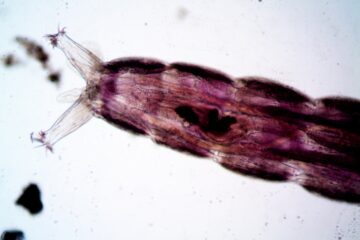![]()
Introduction
The legitimacy of documents is a common issue for forensic document examiners. An examiner may try to corroborate the authorship of a document, establish its creation date, identify the materials used in its production, or spot changes to the original text to ascertain its authenticity.
Examinable Evidence
Identification cards, contracts, wills, titles, and deeds, seals, stamps, bank checks, handwritten communications, machine-generated papers (from photocopiers, fax machines, and printers), money, and electronic documents are all examples of questioned material. Graffiti and digital signatures may be inspected in some instances, but the client should be aware that doing so can be difficult.
When writing was done, documents that don’t have any obvious identifying marks underneath other documents may have crucial impression evidence. Even records that were burned or torn up could still be useful if rebuilt.
The investigator may also seize any writing implements, rubber stamps, envelopes, and office equipment brands and types that the suspect is in possession of. It is even possible to gather evidence for digital documents from the metadata of electronic signature files, which can reveal details like the author and the date the document was written.[1]
Collection of Evidence
Forensic document examiners must have known specimens to compare the material under consideration to when performing examinations. These samples could originate from a variety of well-known places, such a certain ink producer or machine.
Samples used in instances involving handwriting are typically classified into two categories: specimens that were sought and specimens that were gathered. Writings that the investigator has requested from the writer are known as requested specimens. These samples are produced under strictly controlled circumstances, and the writer is kept under close observation. However, writing samples that have been collected are ones that the individual has already finished before the study. Cancelled checks, letters, diaries, signed receipts, medical records, real estate contracts, tax records, and other signed legal papers are examples of good writing samples.
Examiner of Evidence
An experienced forensic document examiner should do the analysis. An examiner normally needs to have finished a two-year, full-time training programme under the supervision of a certified forensic document examiner. The prerequisites for membership in these groups can vary. Examiners are required to finish continuing education to keep their membership in good standing and to keep their abilities up to date.
Time and Place of Analysis
Those that study forensic documents do it either privately in their own labs or for publicly supported labs. Investigators may choose to submit the evidence to a neighbouring lab or hire a private examiner if an agency lacks the ability to analyse questioned papers.
The methods and equipment utilised in forensic document examinations make use of well-known physics and chemical principles. In a typical crime lab, the Questioned Documents unit is furnished with microscopes, digital imaging equipment, infrared and ultraviolet light sources, video analysis tools, and specialist equipment like electrostatic detecting devices (EDD) and materials to perform analytical chemistry.
When looking at documents for indented impression evidence or ink distinction, many forensic document examiners solely utilise non-destructive methods that use light and/or electrostatics. Some inspection methods, like liquid chromatography, call for the removal of tiny amounts of ink from the questioned papers, which is why they are viewed as destructive. These tests could be delivered to facilities with expertise in this kind of ink analysis.
Examiners may use various databases built for comparison purposes for evaluations of documents made by typewriters, fax machines, or printers. When doing handwriting analyses, examiners contrast samples from specific demographics. Larger databases are kept by some organisations, including the German Federal Police and the US Secret Service. For instance, the U.S. Secret Service Forensic Laboratory’s Forensic Information System for Handwriting (FISH) contains handwriting samples from tens of thousands of writers.
Indented Impressions
Using an electrostatic detection device (EDD), such as the Electrostatic Detection Apparatus, one can see indentation impressions on documents that may not be visible to the human eye (ESDA). Areas of indented writing are visualised by an EDD using applied charges and toner, making them apparent to the eye. The ESDA operates under the tenet that indented portions of a document have less negative charge than adjacent portions. This attracts the toner used in the EDD to these regions, making any indentations visible.
This method has allowed for the recovery of indented impressions from up to seven layers of paper beneath the original text. If the papers are not handled or preserved poorly, research has shown that impressions can be successfully visualised from documents up to 60 years old.
Identifying Alterations, Obliterations, Erasures and Page Substitutions
Using photography and other imaging techniques that employ ultraviolet and infrared wavelengths of light, changes, obliterations, and erasures that are invisible to the human eye can frequently be observed. By taking advantage of changes in how different inks react to different wavelengths of light, imaging equipment like a video spectrum comparator (VSC) can detect writing that has been added with a different ink, altered, or erased using radiation filtered at multiple wavelengths. For instance, a paper with information printed in faded ink may be improved or processed to look darker and hence more readable when exposed to specific light sources and an infrared filter.
Determining Individual Dye Components
To determine the chemical make-up of the inks on paper, a procedure known as liquid chromatography can be used. This method involves dissolving a small piece of the questioned document in a solvent and analysing the result. One of the few harmful methods used by the document examiner is this one. The inks can be compared to the International Ink Library, a database kept by the US Secret Service that has information on more than 9,500 inks produced since 1920.
Documents that were typewritten or printed on a machine Documents that were typewritten or printed on a machine, including a fax machine, photocopier, ink jet printer, or laser printer, may be attributed to a specific make or model. Document preparation printing methods can also be recognised. When possible, the examiner should request any readily available accessories as well as established standards from the machine in question and submit the machine itself for inspection.
Seals and Stamps
It is possible to submit for inspection questioned papers with rubber stamp impressions, embossed seals, watermarks, or other mechanically printed marks. It is best to present any suspicious devices connected to the questioned document that may have been used in its creation to the examiner when it is at all feasible. Writing implements, papers, or other substrates, rubber stamps, sealing tools (like notary seals), printing equipment, or other processes are all included in this.
Examination of Handwriting
There are always distinguishable disparities when enough writing from two separate authors is carefully evaluated. Writing sample comparisons consider a wide range of handwriting traits, such as word and letter spacing, slant or slope, speed, pen position, use of capitalization, embellishments, readability, use of punctuation, and other features.
For instance, one individual might create the letter “O” clockwise, whereas another person might make it counter clockwise. Depending on the writer, the letter “M” may be formed in an upward-going “arch” shape (like the McDonald’s Restaurant sign), while another prefers to make the letter “M” in a “garland” formation by moving the “U” finger in a manner that mimics the garland on a Christmas tree. The numerous combinations of qualities included in the writing sample are taken into consideration by document examiners. Examiners also watch for characteristics like pauses in the natural flow of writing, apparent retouching, or unusual tremors. These could be a sign of an abnormal writing process (such as simulation or disguise).[2]
Every time they write, nobody writes with machine-like accuracy, and even within the same page, a person’s handwriting will vary. For instance, if a person signs a page’s worth of documents, each one will be somewhat different. A forensic document examiner who has received training can distinguish between slight variations in a writer’s own handwriting and noticeable discrepancies that indicate distinct writers.
The investigator should gather known writing samples that are comparable in style to the questioned document to perform handwriting comparisons. It should be compared to recognised cursive writing if it is written in that style. The known writings must also contain upper- and lower-case letters if the unknown writing does. The investigator should, whenever possible, additionally gather known writing with comparable letter and number combinations to those found in the questioned documents. It is advised that investigators get 20–30 repetitions of signatures, 15-20 repetitions of bank checks, and 3–4 repetitions of whole written letters for comparison reasons.[3]
Additionally, the investigator should try to acquire any previously known writing that was produced about the same time as the questioned text. This is crucial for writing from young individuals (up to mid-teens) since writing development may still be in the developmental stage, as well as for older people because writing quality may decline with age or disease.
Conclusion
Documents associated with a criminal or civil case sometimes include a wealth of important information. Did the suicide note that was discovered next to the body actually written by a murderer seeking to hide his crime? Do the bank robber’s hold-up notes have indelible imprints that reveal the location of their hideout? Was a wealthy person’s will changed so that a relative may inherit money?
With the use of cutting-edge technology, forensic document examiners may delve into both the visible and invisible marks on a document to extract a wealth of information that may confirm authenticity or reveal additional data vital to the inquiry.
The digital age has made the work of forensic document examiners even more important. With the availability of powerful software programs such as Adobe® Photoshop®, Acrobat® and others, it has become significantly easier for criminals to create and manipulate all manner of fraudulent documents from contracts to currency.
References:
[1] How It’s Done, A Simplied Guide To Forensic Document Examination, https://www.forensicsciencesimplified.org/docs/how.html
[2] Srihari, S., Cha, S.H. & Lee, S., Individuality of Handwriting, J. Forensic Sci. (2002), https://cedar.buffalo.edu/nij/documents/nij_ref.pdf
[3] Tanaka, TA. An Evaluation of the Methods for Optimal Development of Indented Writing as Suggested by the Seward Method. Presented at the American Society of Questioned Document Examiners Annual Meeting, Ottawa, Ontario, 2000



0 Comments